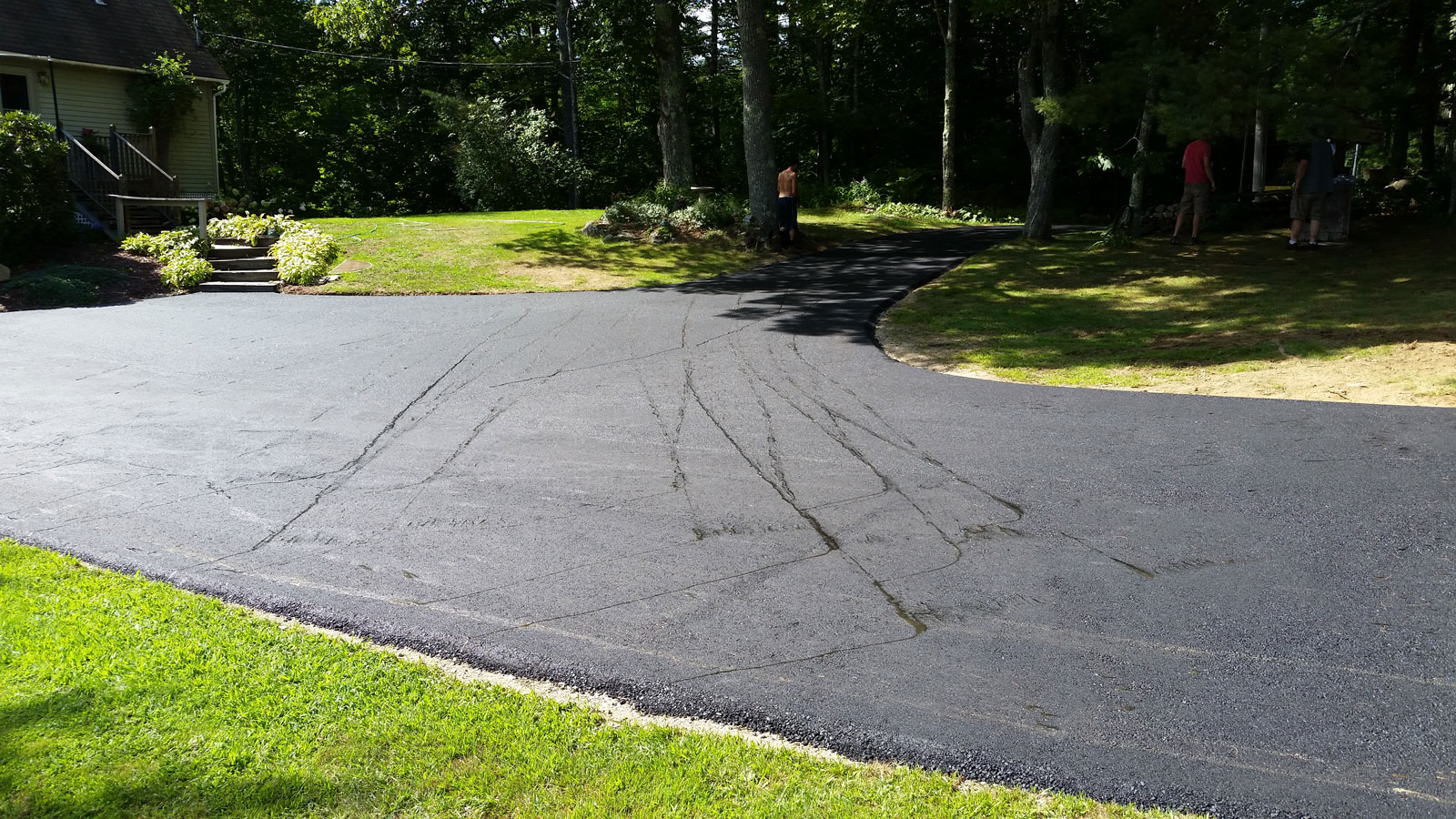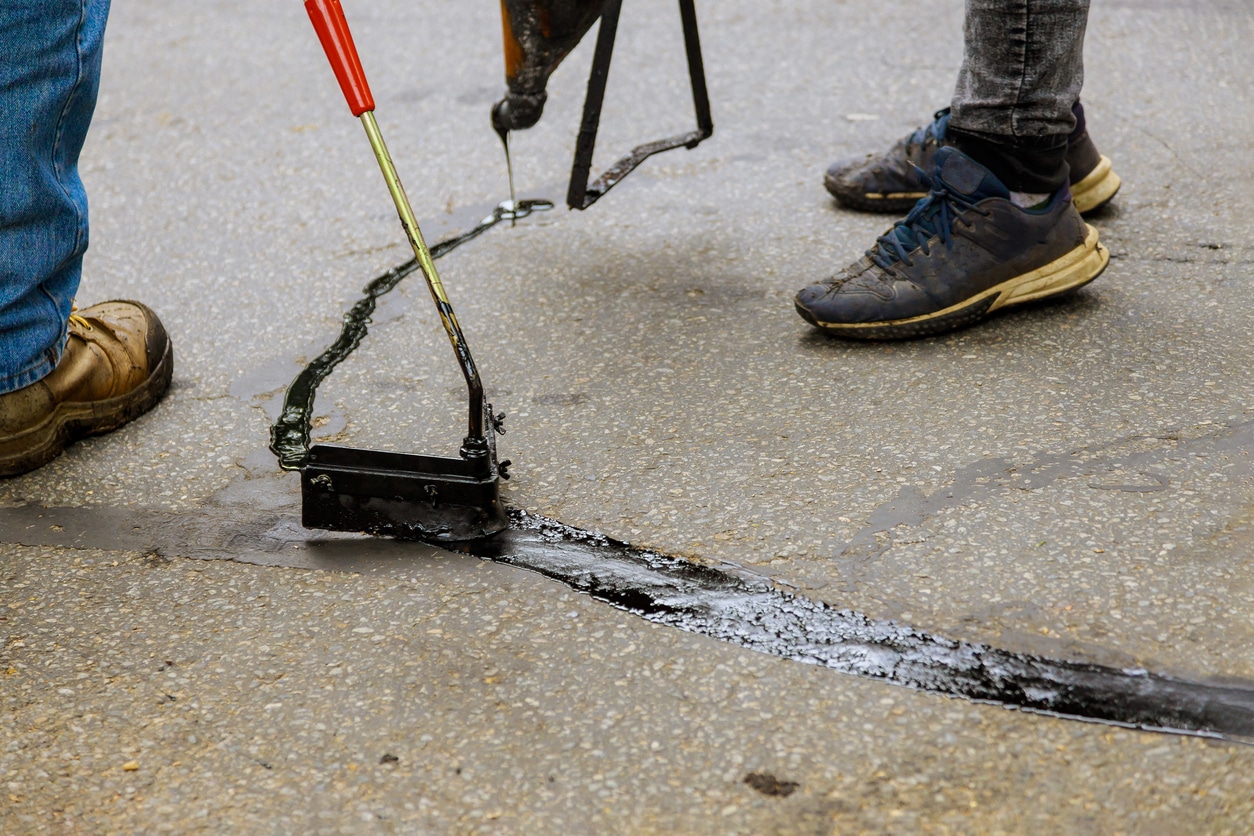Mastering Angled Parking: How Asphalt Sealing Improves Business Whole Lots
Mastering Angled Parking: How Asphalt Sealing Improves Business Whole Lots
Blog Article
Warm Mix Asphalt: A Lasting Remedy for Pavement
Hot Mix Asphalt (HMA) has emerged as a leading lasting option for pavement services, offering a myriad of ecological benefits and cutting-edge innovations. As the need for eco-friendly building methods expands, checking out the subtleties of HMA's sustainability can provide valuable insights right into the future of sidewalk options.
Ecological Advantages of Warm Mix Asphalt

In Addition, Hot Mix Asphalt aids to alleviate urban warm island effects. Its dark shade soaks up sunlight, lowering the amount of warmth mirrored back into the ambience compared to lighter-colored pavements. This can decrease ambient temperature levels in metropolitan locations, decreasing the need for cooling and eventually reducing energy consumption.
In addition, Hot Mix Asphalt adds to improved stormwater monitoring. Its permeable nature permits water to penetrate the pavement and charge groundwater products, decreasing overflow and the threat of flooding. These ecological advantages make Hot Mix Asphalt a sustainable selection for paving roadways and freeways.
Energy Effectiveness in HMA Production
Is energy efficiency an essential consider the production of Hot Mix Asphalt (HMA)? Absolutely. Energy plays a significant duty in the manufacturing of HMA, impacting both price and ecological sustainability. One crucial element of energy effectiveness in HMA manufacturing is making use of warm mix asphalt (WMA) innovations (commercial parking lot paving). WMA permits the blending and positioning of asphalt at reduced temperatures compared to typical hot mix asphalt, resulting in decreased energy intake during production. This process not only lowers fuel usage but likewise reduces greenhouse gas discharges, making it a much more eco-friendly choice.
Furthermore, innovations in plant modern technologies have led to even more energy-efficient HMA production processes. By optimizing power usage in HMA production, the sector can reduce its carbon footprint while maintaining top notch pavement materials.
Recyclability of Warm Mix Asphalt
The recyclability of Hot Mix Asphalt (HMA) is a crucial facet of its sustainability and lasting ecological effect. HMA is just one of the most recycled materials in the United States, with over 100 million tons of redeemed asphalt pavement (RAP) being recycled each year in new pavement building and construction. Recycling HMA provides several environmental benefits, such as lowering the demand for virgin materials, decreasing energy consumption during manufacturing, and reducing the quantity of waste sent to land fills.
The procedure of recycling HMA includes grating the existing pavement, squashing it into smaller items, and mixing it with new accumulation and asphalt binder to produce a recycled mix. In general, the recyclability of HMA plays a significant duty in promoting sustainable methods within the pavement industry.

Long-Term Performance of HMA
Asphalt sidewalks show longevity and resilience over an extended period, showing the long-lasting efficiency of Warm Mix Asphalt (HMA) The durability of HMA can be credited to its capability to stand up to hefty traffic lots, severe climate problems, and the results of aging. Researches have actually revealed that properly designed and appropriately created HMA pavements can last for 20 years or more with regular upkeep. The key to taking full advantage of the lasting performance of HMA hinges on using high-quality products, following finest methods in construction, and implementing effective maintenance approaches. Proper water drainage, regular assessments, and timely fixings are essential for preserving the architectural stability of HMA pavements over time. Additionally, innovations in HMA modern technology, such as making use of polymer-modified binders and warm mix asphalt, have actually even more enhanced the longevity and durability of HMA pavements. By focusing on quality building and upkeep practices, HMA proceeds to show itself as a sustainable and economical service for durable pavement framework.

HMA: Longevity and Sustainability
Showing both sturdiness and sustainability, Warm Mix Asphalt (HMA) has become a cornerstone in the building and construction of lasting sidewalk infrastructures - regrading. HMA's durability comes from its ability to hold up against heavy lots, severe climate condition, and high web traffic volumes, making it a trusted choice for streets, freeways, and airport terminal paths. The make-up of HMA, which usually consists of aggregates, binder, and filler, plays a vital duty in boosting its long life and resistance to deterioration
Additionally, HMA's sustainability lies in its recyclability and energy-efficient production process. The ability to recycle recovered asphalt sidewalk (RAP) in new HMA mixtures minimizes the demand for virgin materials and reduces the you could try these out environmental impact of pavement construction and upkeep. Furthermore, the energy efficiency of creating click this site HMA hinges on its lower mixing temperature levels contrasted to various other pavement materials, resulting in minimized power consumption and greenhouse gas discharges.
Verdict
To conclude, hot mix asphalt (HMA) provides a sustainable option for sidewalk with its eco-friendly features. HMA's recyclability, energy performance in manufacturing, and lasting toughness make it an environmentally friendly choice for road building. By preserving all-natural resources, lowering waste, and decreasing greenhouse gas exhausts, HMA plays a vital role in advertising sustainability in framework growth. Its capability to alleviate metropolitan warmth island impacts better emphasizes its significance in producing environmentally mindful and durable pavement systems.
HMA is one of the most recycled products in the United States, with over 100 million lots of redeemed asphalt sidewalk (RAP) being reused each year in new sidewalk building.The process Go Here of reusing HMA entails grating the existing pavement, squashing it right into smaller sized pieces, and blending it with brand-new aggregate and asphalt binder to produce a recycled mix.Asphalt pavements show resilience and strength over a prolonged period, showing the long-term performance of Warm Mix Asphalt (HMA) Furthermore, advancements in HMA modern technology, such as the usage of polymer-modified binders and warm mix asphalt, have further improved the resilience and durability of HMA sidewalks. The ability to recycle redeemed asphalt pavement (RAP) in brand-new HMA mixtures lowers the demand for virgin products and minimizes the ecological influence of pavement building and upkeep.
Report this page